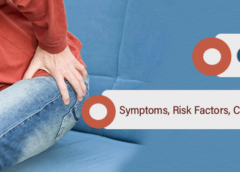Claudication is discomfort that you experience when the muscles in your leg do not get enough blood when you’re exercising. It is also called intermittent Claudication.
It’s a symptom of atherosclerosis, which means plaque in the arteries of your legs has built up and caused blockages. This makes it more difficult for the blood to get through.
It can be a danger to health. If you have it in your legs, you can also have it in your heart, so see your doctor.
The pain may affect your:
- Calf
- Hip
- Thigh
- Buttock
- Arch of Your Foot
Symptoms
Claudication refers to muscle pain due to a lack of oxygen that is deliberately activated and relieved by rest. The following signs include:
- Pain in the calves, thighs, buttocks, hips or feet
- Less often, pain in shoulders, biceps and forearms
- Pain that gets better soon after resting
- Muscle pain, aches, stiffness or exhaustion while you’re using certain muscles
The pain may become more severe over time. You may also start getting pain at rest.
Signs or symptoms of peripheral artery disease, usually in more-advanced stages, include:
- Cool skin
- Severe, constant pain that progresses to numbness
- Skin discolouration
- Wounds that don’t heal
When should I call my healthcare provider?
Call your healthcare provider If your symptoms are not getting improve or getting worse or you have new symptoms day by day. If you have pain in your limbs when you exercise, see your doctor. Claudication and peripheral artery disease can be serious and may affect your quality of life if they are not treated.
Claudication Causes
Causes of claudication can include:
- Diabetes
- High blood pressure
- High cholesterol
- Obesity
- Smoking
What are the risk factors for claudication?
Atherosclerosis is the most common cause of arterial blockage which can cause claudication. Risk factors for claudication are the same as those for atherosclerosis, and may include:
- Smoking
- Diabetes
- Being overweight
- Not being active
- High cholesterol
- High blood pressure
- Family history of atherosclerosis or claudication
- Elderly people (55 for men, 60 for women)
- Heart disease
Complication
Serious cases of claudication, usually long-term, may cause serious complications including:
- Frequent pain
- Difficulty in exercising, walking or doing daily activities
- Slow-healing skin sores and wounds
- Chronically cold and darkened skin
- Loss of hairs
- Impotence
- Serious skin infections, like as gangrene
In rare cases, people with serious or untreated claudication or infections will also experience:
- Amputation
- Permanent Disability
- Heart Attack
- Stroke
Prevention of claudication
Since many people with claudication also have atherosclerotic disorders such as peripheral artery disease, coronary artery disease, and/or carotid artery blockages (carotid stenosis), actively managing atherosclerosis risk factors may help avoid heart attack and stroke and minimize the likelihood of amputation.
A claudication preventive program can also be used to avoid or reduce the development of PAD associated with claudication once it has been diagnosed. Consult your physician for diagnosis and treatment.
Some preventative tips for claudication may include:
Not smoking: Smoking puts you at a high risk of peripheral artery disease, which raises the chances of getting worse. Seek to minimize your exposure to second-hand smoke, too.
Workout daily: It will keep the muscles in shape and allow them to make more productive use of the oxygen they receive. While exercise can be unpleasant at first, a health care provider planned and controlled exercise program may improve your symptoms and help you maintain mobility.
Keeping your cholesterol levels healthy: Get your cholesterol checked, and follow your doctor’s recommendations to keep your levels in a normal range. This may include medications and a balanced diet filled with fruits, vegetables, legumes, and grains while keeping fat intake low.
Don’t take medications that constrict blood vessels: These include cold medications and sinus medications that contain pseudoephedrine. Ask your doctor which over-the-counter medicines may be harmful to you.
Be careful not to hurt your legs or feet: Since your legs and feet are not getting enough oxygenated blood, injuries are more likely to develop complications. Make sure to wear suitable, protective shoes that fit you well if you are doing something that may injure your feet.

Leave a Reply
You must be logged in to post a comment.